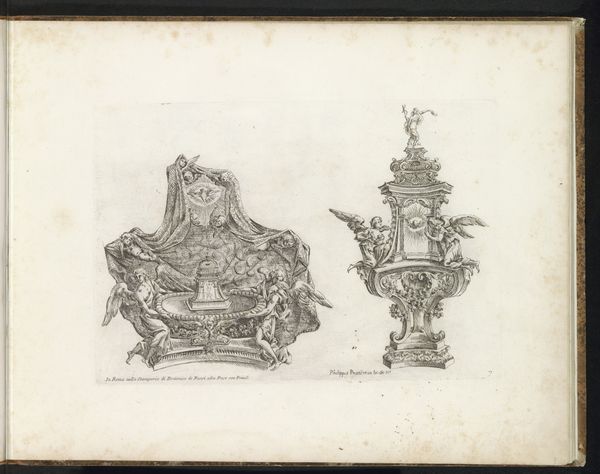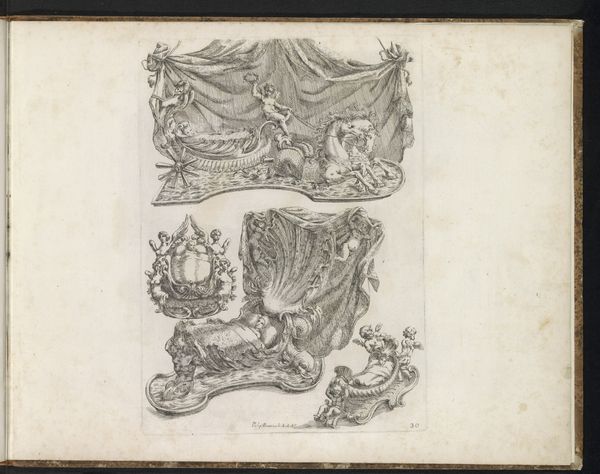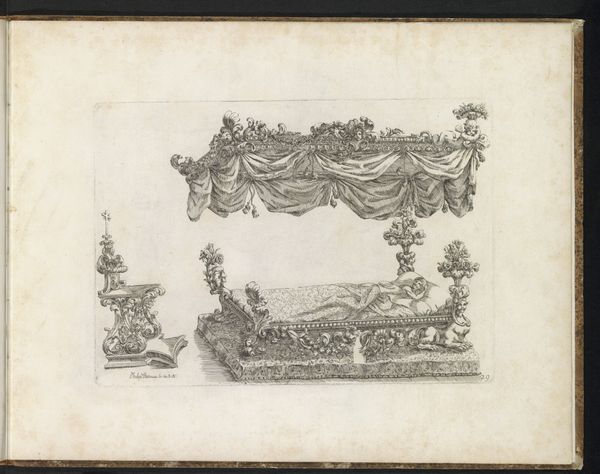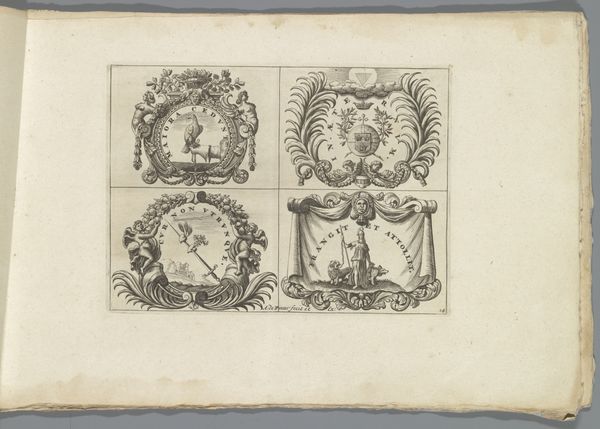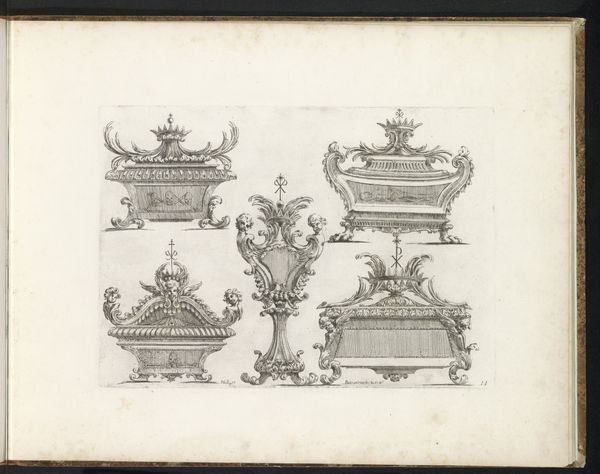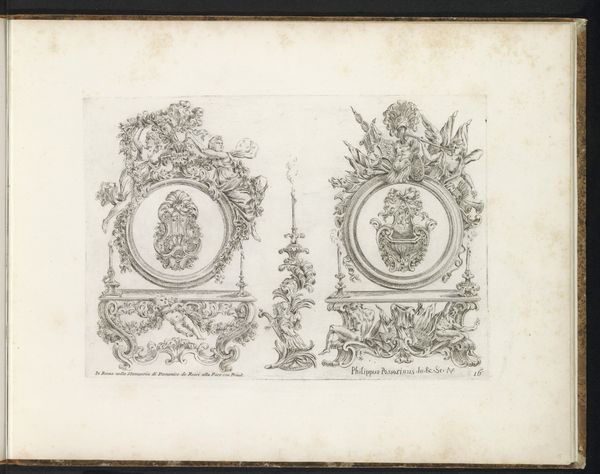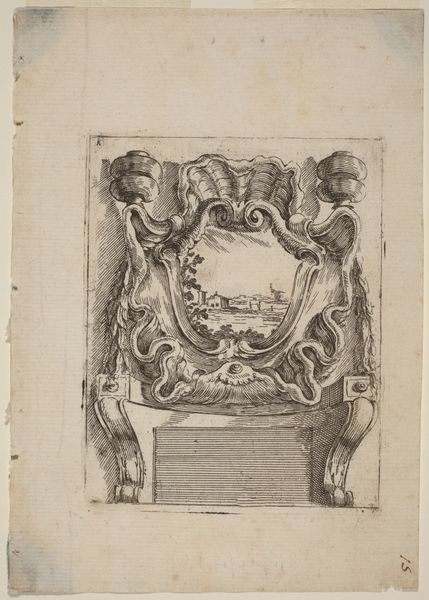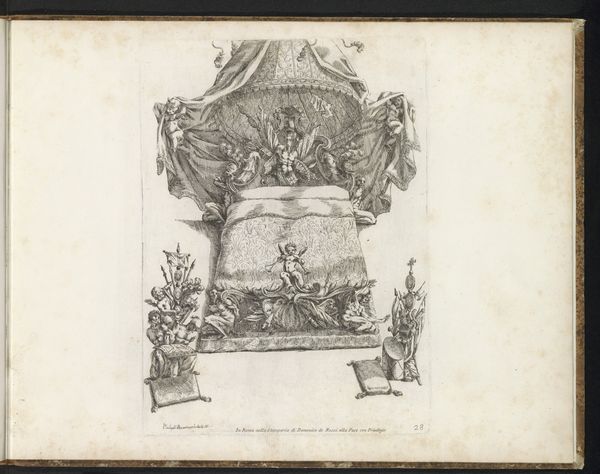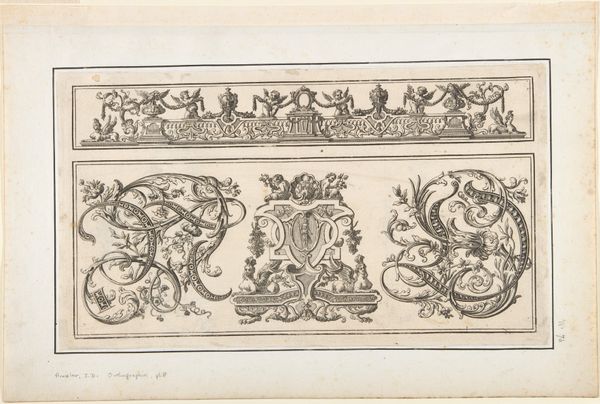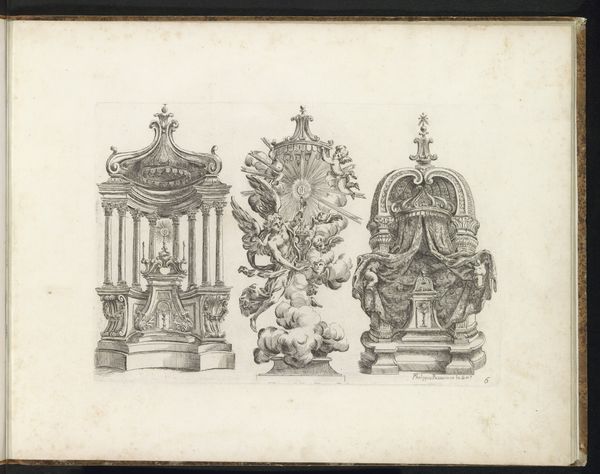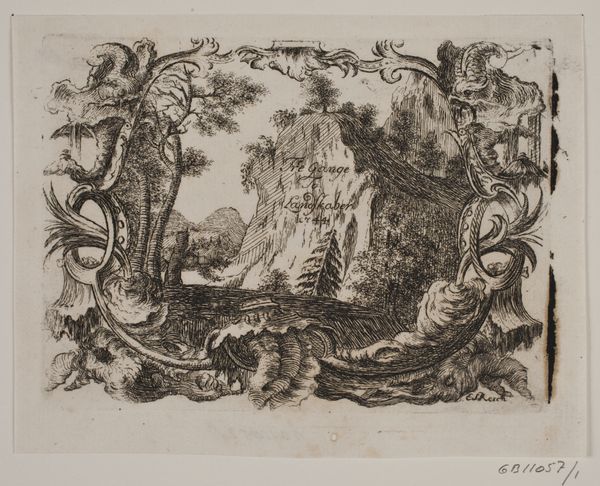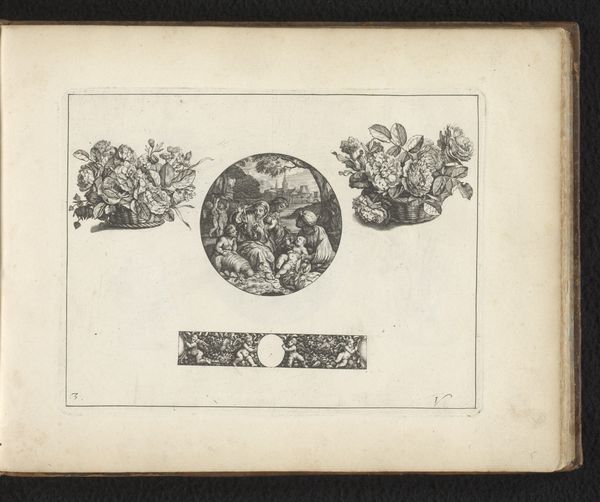
drawing, paper, ink
#
drawing
#
baroque
#
pen drawing
#
pencil sketch
#
figuration
#
paper
#
ink
#
line
#
decorative-art
Dimensions: height 350 mm, width 450 mm
Copyright: Rijks Museum: Open Domain
Curator: What strikes me immediately is the incredible intricacy of line. It’s all curves and flourishes, a kind of controlled exuberance. Editor: Indeed. Here we have "Vijf ontwerpen voor kinderledikanten," or "Five Designs for Children's Cribs," created in 1698 by Filippo Passarini. It's a pen and ink drawing on paper. Note how these detailed sketches showcase potential crib designs. Curator: The degree of ornamentation is remarkable. Were these designs actually realized, or were they primarily aspirational? I'm curious about the social context that prompted such elaborate designs for infant furniture. Editor: That's a vital question. Understanding that in the Baroque era, even functional objects were imbued with status. The elite demonstrated wealth and refinement through every object. I imagine the construction and commissioning of such pieces provided significant labor opportunities. Curator: The weight of all this detailing—the drapery, the cherubs—almost obscures the function. Form overwhelms practicality, I think. It tells you a lot about parental and family social status in 1698, not really about babies at all. Editor: And note that this tension— between form and function, between utility and display— is central to Baroque aesthetics. Passarini brilliantly utilizes line to articulate volume and texture. Look closely; see how he uses hatching to give depth to the drapery. Curator: So, the materials – ink and paper – were a means of showcasing wealth and luxury. One could easily commission craftsmen and furniture makers to fulfill the design! How interesting! It almost elevates the act of childcare into an aristocratic performance. Editor: Precisely. Seeing this pen and ink sketch highlights not just a dedication to artistry, but to design, and an early concept that could turn a common household object into a political or sociological object. Curator: Studying these "Vijf ontwerpen voor kinderledikanten" invites a rich visual language and understanding of class, wealth and family in Baroque art history. Editor: It is indeed, an interesting reminder how aesthetics can reflect cultural values and class divisions. The artwork’s refined quality opens up dialogues regarding material culture, design, and artisanal labor, that transcend beyond basic artistic appreciation.
Comments
No comments
Be the first to comment and join the conversation on the ultimate creative platform.
